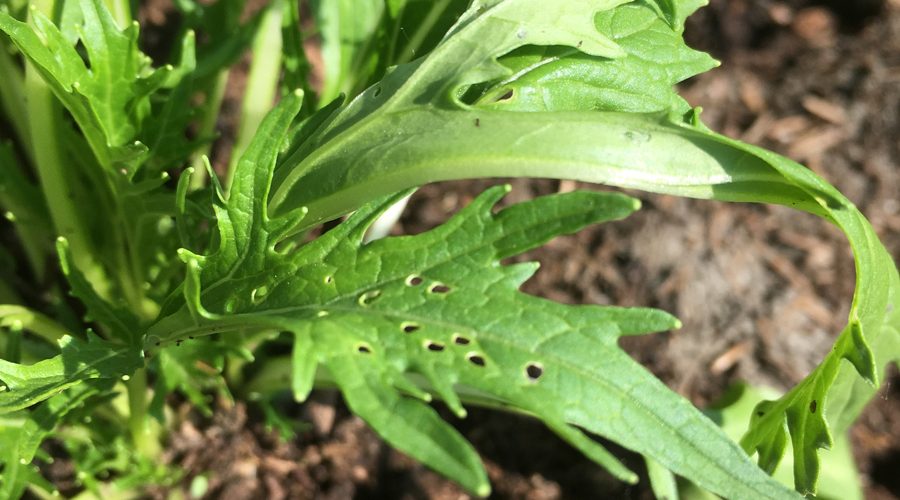This month we’re looking at a tiny, jumpy little bug that nibbles a lot of tiny holes in leaves. The small flea beetle has long back legs and hops away like a flea when disturbed. Young brassicas and mustard leaves (listed below) are amongst its favourite foods and they will eat several tiny holes like those pictured in a single leaf.
- Wild Rocket
- Mizuna
- Pak Choi
- Swede
- Turnip
- Cabbages
- Broccoli
Adult Flea Beetles overwinter in the garden, and in spring and summer they are on the lookout for food. They are particularly active during warm, dry weather, and can cause quite a lot of damage. The main problem is that they make the leaves of plants look a little unsightly, so don’t be too disheartened if your veg patch has suffered, you can still eat your crops!
If you are struggling with them right now, the best thing you can do is keep the soil around plants moist, by regular watering over the next few weeks during dry spells. You could also apply a mulch. The good news is that we are coming to the end of the flea beetle season now, so they shouldn’t be problematic for much longer, and if you want to try again, many of the flea beetle’s preferences are easily grown in autumn/winter, so you can replant in September!
To keep flea beetles at bay next year, follow these steps:
- Cover plants with an insect proof mesh
- Add a mulch. The mulch does two things – firstly it keeps moisture in the soil (flea beetles thrive in hot dry weather) and secondly it should stop the larvae that hatch at the base of plants from becoming adults.
- Keep the young seedlings well watered so that the soil doesn’t dry out (they prefer dry, warm soil).
- You can also try companion planting – pop some nasturtiums near vulnerable crops and with luck the flea beetles will munch away on the nasturtiums instead.

